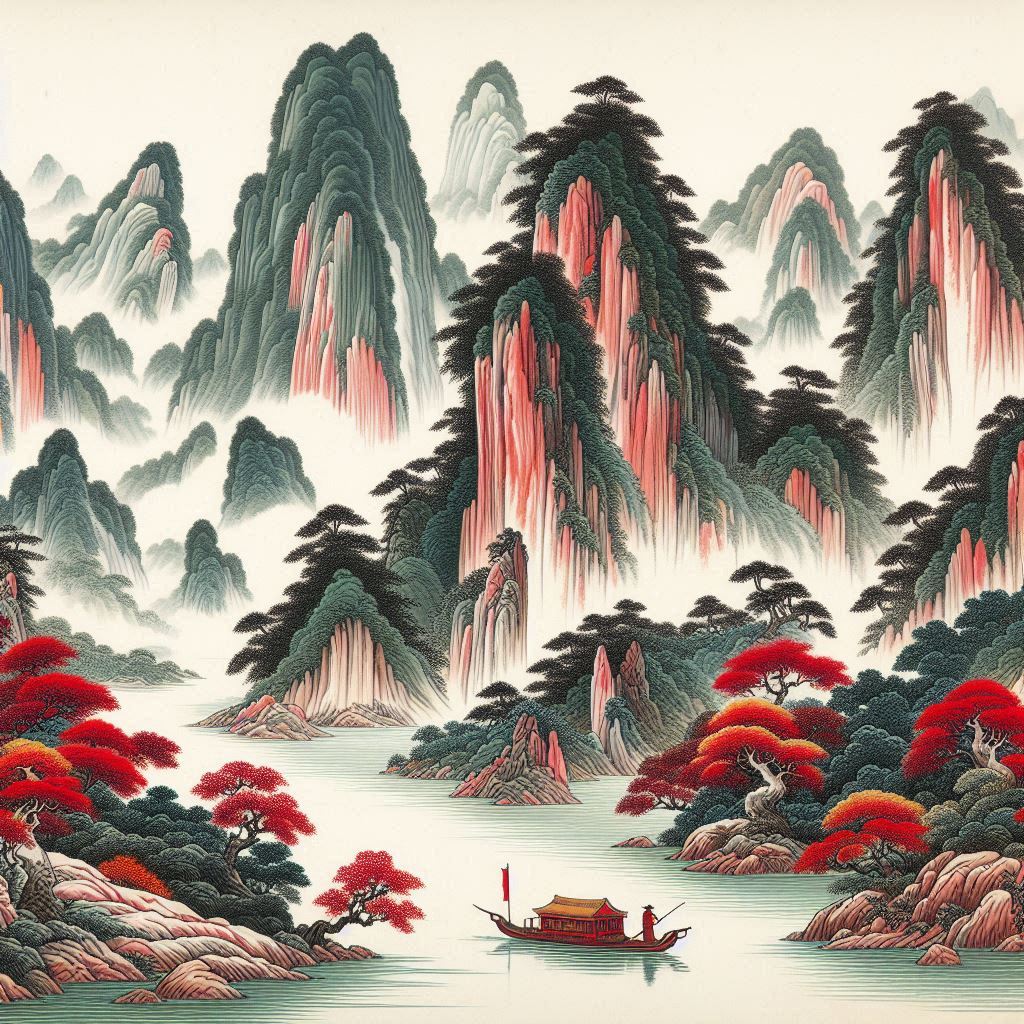Cause
- Spleen Qi deficiency
- negative emotions
- over-consumption of fatty and greasy foods
- living in damp-heat environment
In traditional Chinese medicine the Spleen controls the transformation and transportation of fluids. If the Spleen is weak and the transportation of fluids is impaired, “internal dampness” may accumulate. "Dampness” is obstructive in nature and may obstruct any organ in the body(1). In the case of “damp-heat in the Gallbladder” the organ obstructed is the Gallbladder.
A major cause for the accumulation of “internal heat” are negative emotions. Anger – the emotion of the Liver/Gallbladder partnership – stagnates the free flow of Qi in these organs, which in the long run leads to the generation of heat. When “internal dampness” and “internal heat” combine we have what is called “damp-heat”(2). The most common organs, which suffer from damp-heat are the Spleen, the Large Intestine, the Urinary Bladder, and the Gallbladder.
The over-consumption of fatty and greasy foods also leads to the formation of damp-heat(2)(3), as these foods are both heavy and hot in nature. External climatic damp-heat in hot, damping environments also leads to the accumulation of internal damp-heat(2)(3).
If you want to learn more about the Gall Bladder and its functions from the perspective of traditional Chinese medicine go to "The Gallbladder in Traditional Chinese Medicine" in the Physiology chapter.
Symptoms
- hypochondriac distention and pain
- gallbladder stones
- yellow complexion
- bitter taste in the mouth
- nausea, vomiting
- thirst with no desire to drink
- difficult scanty urination, dark yellow urine
As dampness is obstructive in nature “damp-heat in the Gallbladder” will be experienced as hypochondriac distention and pain(2)(3) (the Liver/Gallbladder partnership is located in the hypochondriac region). The obstruction will furthermore interrupt the drainage of bile in the biliary system and cause the bile to flood to the skin(1). This may manifest in yellow complexion(1)(2) (jaundice) and bitter taste(2)(3) (the taste of the bile). The obstruction of bile furthermore interferes with the Gallbladder’s aid to digest food thus nausea and vomiting may manifest(1)(2)(3).
As heat manifests in thirst (we need water to take out the fire), but dampness as a form of fluid retention manifests in lack of thirst, “damp-heat” will manifest in thirst with no desire to drink(2). There will be scanty urination(1)(2)(3) because of the obstructive nature of dampness, and the urine will be dark yellow(1)(2)(3) because of the presence of heat.
Damp-heat in the Gallbladder may manifests in gallbladder stones. This is because the heavy substance of the dampness is under the “steaming and brewing” action (pg.284)(2) of the heat, which congeals and solidifies it. Thus in traditional Chinese medicine stones are viewed as manifestation of damp-heat.
Treatment Approaches
As “damp-heat” is a complex pattern, a complex treatment is necessary. The treatment principle for clearing damp-heat in the Gallbladder is resolving “internal dampness” and clearing “ heat” in the Liver/Gallbladder partnership.
On how to clear “internal dampness” with foods and acupressure go to “Dampness in the Spleen” in the Physiology chapter.
On how to clear “heat” from the Liver/Gallbladder partnership with foods and acupressure go to “Heat in the Liver” in the Physiology chapter.
To unlock the rest of this article select "Yes, I want to learn!" below.

Food therapy is the most economical and non-toxic biochemical approach to health and disease. Food is something we continuously use to sustain our lives. Learning what foods are healing (and what disruptive) for each condition has the potential to convert every meal into a form of therapy.
YS
(1) Yang Weiyi, Meng Fanyi, Jiang Yuanan(2002). Diagnostics of Traditional Chinese Medicine. Beijing: Beijing University of Chinese Medicine and Pharmacology
(2) Maciocia, Giovanni (1989). The Foundations of Chinese Medicine. Edinburgh: Harcourt Publishers Limited
(3) Deng Liangye, Gan Yijun, He Shuhui, Ji Xiaoping, Li Yang, Wang Rufen, Wang Wenjing, Wang Xuetai, Xu Hengze, Xue Xuiling, Yuan Jiuling (1987). Chinese Acupuncture and Moxibustion. China: Foreign Languages Press
Related Articles:
Herbs that clear heat and dry dampness
The Liver, the season spring, and spring foods that cleanse the Liver and Gall Bladder
Herbs that cool the blood and benefit Heat in the Liver
Herbs that regulate the Qi and benefit Liver Qi stagnation
Herbs that tonify the blood and benefit Liver Blood deficiency
Please read our Disclaimer









